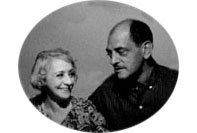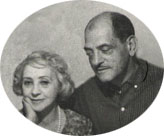|
Given that the piano is the link to this new comment, I would like to
mention that I would have liked to do a serious study about pianos in
Buñuel’s work. I always think that in my next revision of Buñuel’s films,
I will pay attention to any piano appearing, its use, image, and its
probable connotations and symbolism.
In passing, we can remember the very well known pianos with rotten
donkeys in An Andalusian Dog, with a very controversial meaning,
and the piano in The Exterminating Angel,
virtual door (the key was a sonata by Paradisi) to the longed exit for
the people locked in.
There is also the piano scene in The Phantom of Liberty. This
sequence is too revealing to me. Knowing the fondness of Pilar Bayona
for Carnival (Op.9) by Schumann, a piece which appeared
repeatedly in her programmes, living it with special joy, knowing also
that those years Pilar Bayona was playing Brahms regularly, making known
even works that had not been heard in Saragossa, How can I avoid
thinking of her when the naked pianist plays Chopin, the most
emotive piece in Carnival, or when the male character asks for a
piece by Brahms?.
I could not be at peace with myself if I do not add that this
intellectual association is mixed with a delighted bewilderment or
uneasiness, because as her nephew, godson, and piano student, I have
never thought of her "piano nude".
In spite of this, this idea made me ask Buñuel’s sons (in a panel which
took place the 26th of April in the Residencia de Estudiantes in
Madrid) if they had any data on the subject, or if they remembered any
remark made by their father showing that this scene could be a
buñuelesque memory/dedication to Pilar Bayona, but although seen as
possible, there was not any corroboration of it.
However, and although I know perfectly well that these details don’t
tarnish the greatness of Buñuel’s films, as a musician I ask myself: Why
didn’t he choose an accurate version of Schumann’s Chopin,
instead of the one we can hear in the film? Was it deliberate? |















